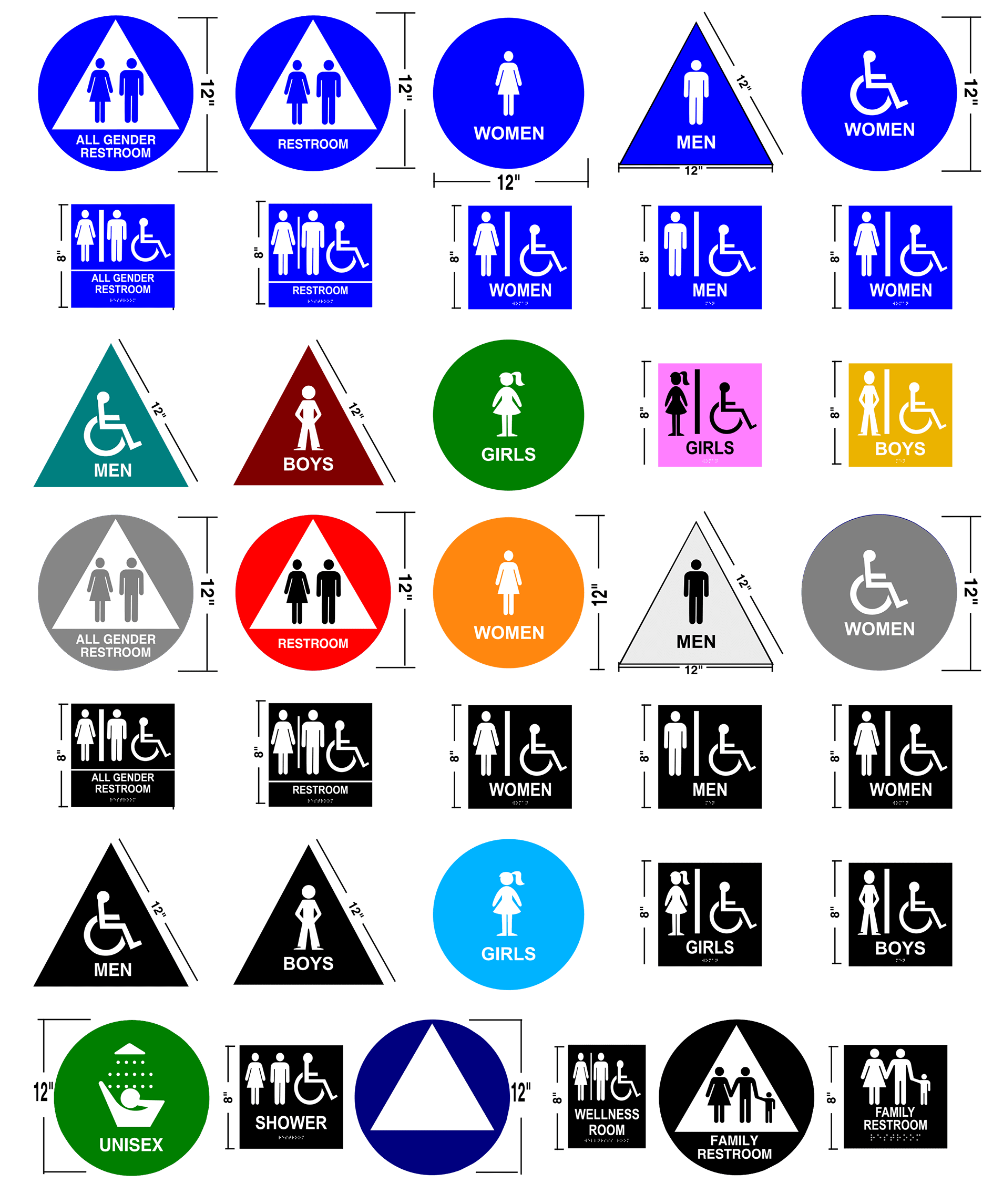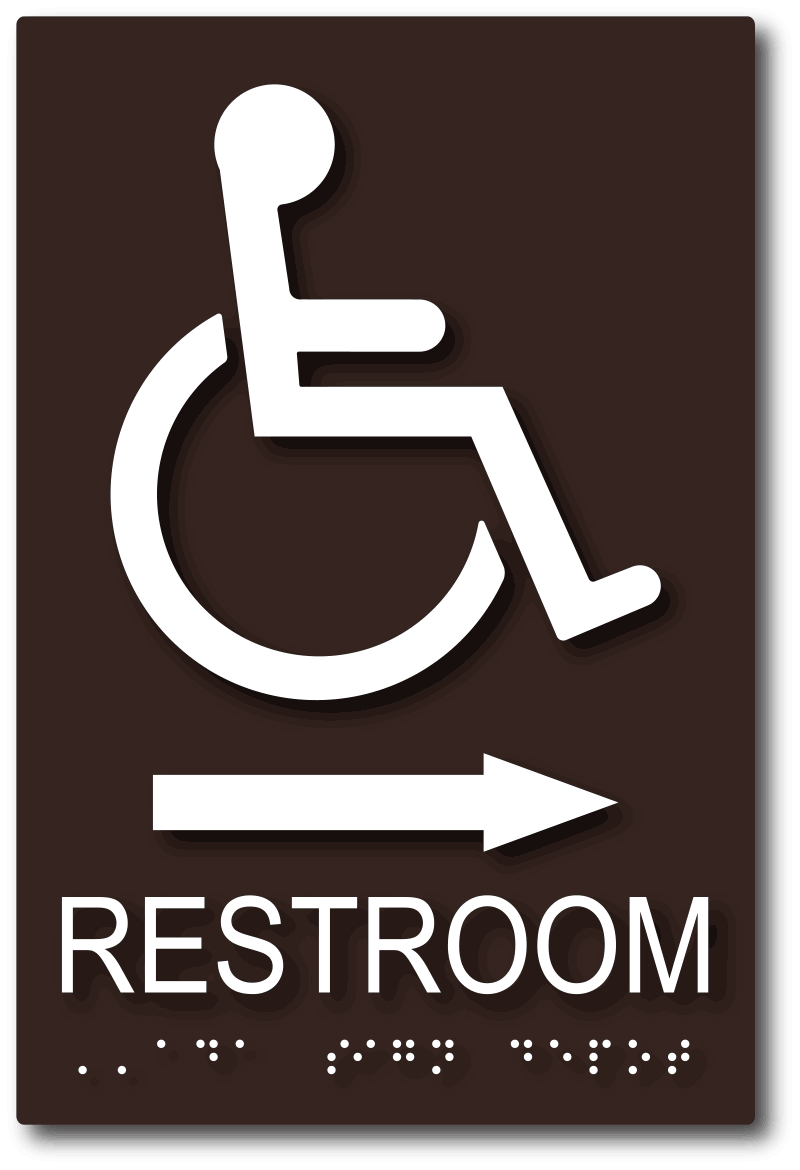Check out the Value of ADA Signs in Public Spaces
Check out the Value of ADA Signs in Public Spaces
Blog Article
Checking Out the Secret Functions of ADA Indications for Improved Ease Of Access
In the realm of ease of access, ADA indications function as silent yet effective allies, making certain that rooms are inclusive and accessible for people with disabilities. By incorporating Braille and tactile elements, these indicators break obstacles for the aesthetically impaired, while high-contrast color design and understandable font styles deal with diverse aesthetic requirements. Additionally, their calculated placement is not arbitrary yet instead a calculated initiative to assist in seamless navigating. Beyond these functions lies a much deeper narrative concerning the evolution of inclusivity and the recurring commitment to developing equitable rooms. What much more could these indicators symbolize in our pursuit of global accessibility?
Significance of ADA Compliance
Guaranteeing compliance with the Americans with Disabilities Act (ADA) is critical for promoting inclusivity and equivalent accessibility in public rooms and work environments. The ADA, enacted in 1990, mandates that all public facilities, employers, and transport solutions suit individuals with specials needs, guaranteeing they enjoy the exact same legal rights and possibilities as others. Conformity with ADA standards not only satisfies lawful obligations but likewise improves a company's online reputation by demonstrating its commitment to diversity and inclusivity.
One of the essential elements of ADA conformity is the execution of obtainable signs. ADA signs are developed to guarantee that individuals with specials needs can quickly browse with rooms and structures. These indicators must stick to particular guidelines concerning size, typeface, color contrast, and positioning to assure presence and readability for all. Effectively applied ADA signs aids get rid of barriers that people with impairments frequently experience, thus promoting their self-reliance and self-confidence (ADA Signs).
Furthermore, sticking to ADA guidelines can alleviate the risk of lawful consequences and potential penalties. Organizations that fail to abide with ADA guidelines might deal with penalties or suits, which can be both damaging and monetarily troublesome to their public photo. Therefore, ADA conformity is important to fostering a fair environment for everybody.
Braille and Tactile Elements
The consolidation of Braille and tactile aspects right into ADA signage personifies the principles of access and inclusivity. These features are critical for individuals that are blind or visually impaired, enabling them to browse public rooms with greater freedom and confidence. Braille, a tactile writing system, is crucial in offering composed details in a format that can be quickly regarded through touch. It is normally positioned beneath the matching message on signs to make sure that people can access the information without visual help.
Tactile elements extend beyond Braille and include raised personalities and icons. These parts are created to be noticeable by touch, enabling individuals to identify room numbers, restrooms, leaves, and various other essential locations. The ADA establishes particular guidelines regarding the dimension, spacing, and positioning of these tactile elements to optimize readability and make certain uniformity across different settings.

High-Contrast Shade Schemes
High-contrast color pattern play a critical duty in enhancing the visibility and readability of ADA signage for people with visual disabilities. These schemes are crucial as they maximize the distinction in light reflectance between message and background, making certain that indications are conveniently discernible, also from a distance. The Americans with you can try this out Disabilities Act (ADA) mandates the usage of certain shade contrasts to fit those with limited vision, making it a critical facet of compliance.
The efficiency of high-contrast colors hinges on their ability to stick out in various illumination problems, including poorly lit environments and areas with glow. Generally, dark message go to the website on a light history or light text on a dark history is used to achieve ideal comparison. Black text on a yellow or white history provides a plain aesthetic distinction that aids in quick recognition and understanding.

Legible Fonts and Text Size
When thinking about the style of ADA signage, the choice of legible fonts and suitable text size can not be overemphasized. The Americans with Disabilities Act (ADA) mandates that typefaces need to be not italic and sans-serif, oblique, script, highly decorative, or of uncommon type.
According to ADA standards, the minimum message height need to be 5/8 inch, and it must increase proportionally with watching range. Consistency in text dimension contributes to useful source a cohesive visual experience, helping individuals in navigating atmospheres efficiently.
Furthermore, spacing in between letters and lines is integral to readability. Appropriate spacing prevents personalities from appearing crowded, improving readability. By sticking to these requirements, developers can substantially improve availability, ensuring that signs offers its intended objective for all individuals, despite their aesthetic capabilities.
Efficient Positioning Strategies
Strategic positioning of ADA signs is vital for making the most of access and guaranteeing conformity with lawful standards. Correctly located indicators guide individuals with specials needs effectively, helping with navigation in public rooms. Trick considerations include closeness, presence, and elevation. ADA standards state that indicators need to be placed at an elevation in between 48 to 60 inches from the ground to guarantee they are within the line of sight for both standing and seated individuals. This conventional height variety is important for inclusivity, making it possible for mobility device individuals and individuals of varying elevations to accessibility details easily.
Furthermore, indications should be placed surrounding to the lock side of doors to enable easy identification prior to entrance. This placement helps people find rooms and rooms without blockage. In situations where there is no door, signs need to be located on the closest adjacent wall surface. Consistency in sign positioning throughout a facility boosts predictability, lowering confusion and improving overall customer experience.

Verdict
ADA indicators play an essential function in advertising ease of access by incorporating features that attend to the demands of individuals with specials needs. Including Braille and tactile aspects makes certain crucial details comes to the visually damaged, while high-contrast color pattern and clear sans-serif font styles boost presence across various illumination problems. Reliable positioning strategies, such as suitable installing elevations and critical areas, further facilitate navigation. These aspects collectively promote a comprehensive setting, emphasizing the relevance of ADA conformity in ensuring equal access for all.
In the realm of accessibility, ADA indicators offer as quiet yet powerful allies, guaranteeing that spaces are accessible and comprehensive for individuals with handicaps. The ADA, established in 1990, mandates that all public centers, employers, and transport solutions fit individuals with disabilities, guaranteeing they take pleasure in the very same rights and possibilities as others. ADA Signs. ADA indicators are developed to guarantee that people with specials needs can quickly navigate via buildings and spaces. ADA guidelines stipulate that signs ought to be installed at a height between 48 to 60 inches from the ground to ensure they are within the line of sight for both standing and seated individuals.ADA indications play a crucial role in advertising accessibility by incorporating functions that address the needs of people with handicaps
Report this page